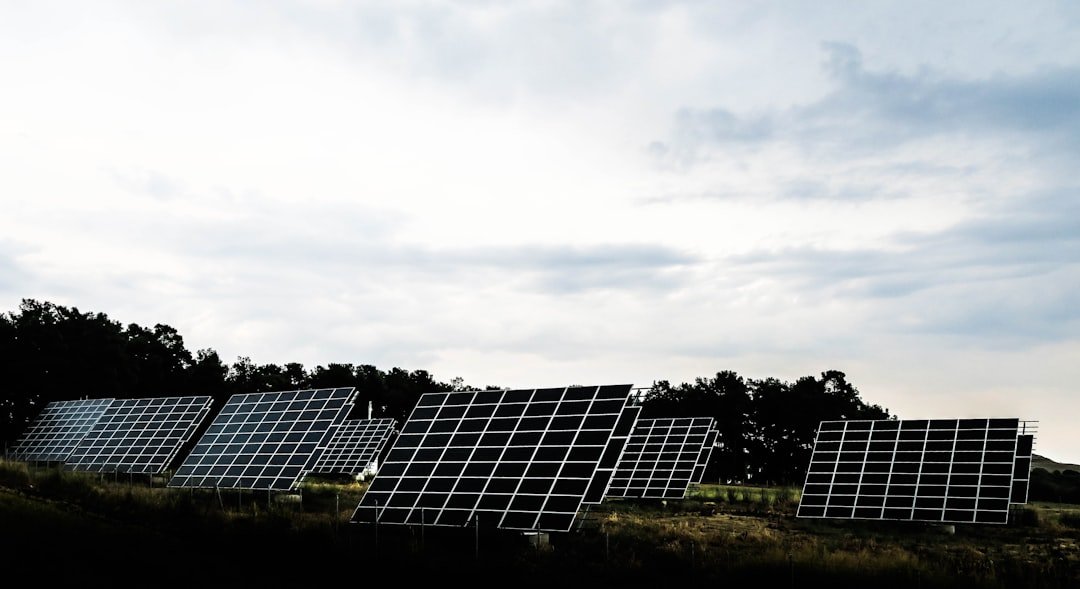A collection of atmospheric gases known as greenhouse gases (GHGs) trap heat from the sun, producing a “greenhouse effect” that is crucial to regulating Earth’s temperature. Life as we know it would not be possible on our planet if these gases weren’t present because it would be extremely cold. But because of human activity, the concentration of these gases in the atmosphere has increased dramatically, intensifying the greenhouse effect and accelerating climate change and global warming. For the purpose of creating strategies that effectively mitigate climate change, it is essential to comprehend the different kinds of greenhouse gases, their sources, & their effects.
Key Takeaways
- Greenhouse gases trap heat in the Earth’s atmosphere, leading to the greenhouse effect and global warming.
- Carbon dioxide (CO2) is the most common greenhouse gas, primarily emitted through human activities such as burning fossil fuels and deforestation.
- Methane (CH4) is a potent but short-lived greenhouse gas, mainly produced by livestock, rice paddies, and natural gas production.
- Nitrous oxide (N2O) is a powerful and long-lasting greenhouse gas, primarily released from agricultural and industrial activities.
- Greenhouse gas emissions come from various sources including energy production, transportation, agriculture, and waste management, contributing to climate change.
Carbon dioxide (CO2), methane (CH4), nitrous oxide (N2O), and fluorinated gases are the main greenhouse gases. The characteristics, origins, and environmental impacts of each of these gases vary. The main causes of the rising concentrations of these gases are deforestation, industrial processes, and agricultural practices.
As we examine each type of greenhouse gas in greater detail, it becomes clear that stabilizing the climate & guaranteeing future generations have a sustainable future depend on addressing their emissions. Extended Durability of CO2. Due to the fact that CO2 remains in the atmosphere for decades to centuries, even slight increases in emissions can have a long-lasting impact on our planet’s temperature. CO2’s part in climate change. CO2 has a complex role in climate change.
It intensifies the greenhouse effect, raising global temperatures, as its concentration increases. Melting ice caps, rising sea levels, & changed weather patterns are just a few of the environmental changes that could arise from this warming. Strategies for reduction are urgently needed. For example, the Intergovernmental Panel on Climate Change (IPCC) has declared that human activity is the primary cause of the more than 40 percent increase in atmospheric CO2 levels since the pre-industrial era. The need for strategies to reduce CO2 emissions through the use of renewable energy, energy efficiency upgrades, and reforestation initiatives is highlighted by this concerning trend.
| Greenhouse Gas | Chemical Formula | Global Warming Potential (GWP) |
|---|---|---|
| Carbon Dioxide (CO2) | CO2 | 1 |
| Methane (CH4) | CH4 | 25 |
| Nitrous Oxide (N2O) | N2O | 298 |
During a 100-year period, methane is more than 25 times more effective than carbon dioxide as a greenhouse gas at trapping heat in the atmosphere. Nevertheless, it only lasts for roughly ten years in the atmosphere before decomposing into carbon dioxide and water vapor. Methane is an important target for efforts to mitigate climate change because of its high potential for global warming, even though it only lasts a short time in the atmosphere. Landfills, natural gas production, wetlands, and agriculture—particularly the digestion of livestock—are the main sources of methane emissions.
Methane emissions are mostly caused by agricultural activities. Enteric fermentation is the mechanism by which ruminant animals, like cows, produce methane during digestion. Also, improperly managed manure management techniques can release methane. Methane is also released by landfills during the anaerobic breakdown of organic waste.
Mitigating these sources through enhanced farming methods, waste disposal strategies, & technological advancements can significantly lower methane emissions. For instance, using landfill methane to produce energy reduces emissions while simultaneously producing a renewable energy source. Another powerful greenhouse gas is nitrous oxide, which has a potential to cause 298 times more global warming than carbon dioxide over a 100-year period. Because of its lengthy atmospheric lifetime (roughly 114 years), it can linger in the atmosphere for generations after being released. Agricultural practices, specifically the application of synthetic fertilizers and the handling of manure, are the main causes of nitrous oxide emissions.
Increased nitrous oxide emissions may result from the application of nitrogen-based fertilizers to soils due to microbial processes. Nitrous oxide’s role in stratospheric ozone depletion exacerbates its effects on climate change. It thins the ozone layer by reacting with ozone molecules in the upper atmosphere, even though it also causes global warming.
This dual threat emphasizes how crucial it is to properly control nitrous oxide emissions. Nitrous oxide emissions can be reduced while agricultural productivity is maintained by implementing strategies like improving soil health, implementing precision agriculture methods, & optimizing fertilizer application rates. Many different facets of human activity are involved in the interconnected & varied sources of greenhouse gas emissions. The burning of fossil fuels for transportation and electricity production makes the energy sector the biggest source of greenhouse gas emissions worldwide. By using energy and causing chemical reactions, industrial processes also contribute significantly to emissions.
Another significant source is agriculture, where the raising of livestock and the use of fertilizer are the main causes of emissions of nitrous oxide and methane. Changes in land use, especially deforestation and land degradation, make greenhouse gas emissions worse by decreasing the planet’s ability to absorb carbon dioxide. By using more energy and allowing organic waste to break down in landfills, urbanization and waste management techniques also increase greenhouse gas emissions. To develop focused policies and practices aimed at lowering overall emissions across sectors, it is imperative to comprehend these sources. Greenhouse gases have a significant and complex effect on climate change.
They contribute to the rise in global temperatures, a phenomenon known as global warming, as their concentrations in the atmosphere increase. Hurricanes, droughts, & heatwaves are among the more common and severe weather events brought on by this warming. As early as 2030, the IPCC predicted that global temperatures could increase by 1 to 5°C over pre-industrial levels if GHG emissions were not significantly reduced. In addition to rising temperatures, the effects of climate change also include rising sea levels brought on by the melting of glaciers and ice caps, which endanger coastal communities all over the world. Ecosystems are also impacted when species become extinct as a result of habitat loss or struggle to adapt to changing climates.
Also, as warmer temperatures increase the habitats of disease-carrying organisms, human health is at risk from the spread of vector-borne diseases & increased air pollution linked to the burning of fossil fuels. It takes a multipronged strategy that includes policy reforms, technological advancements, and societal behavioral changes to reduce greenhouse gas emissions. Making the switch to renewable energy sources, like hydroelectric, wind, & solar power, is essential to lowering carbon dioxide emissions from the production of electricity and our dependency on fossil fuels. Building and transportation energy efficiency improvements can also greatly reduce energy use & related emissions.
Using sustainable agricultural techniques like crop rotation, cover crops, and agroforestry can improve soil health and lower methane and nitrous oxide emissions. Also, encouraging electric cars and public transportation can aid in reducing emissions from the transportation industry. Governments are essential in putting policies into place that encourage emission reductions by means of carbon pricing schemes or clean technology subsidies. Education & public awareness campaigns play equal roles in promoting behavioral shifts that aid in efforts to reduce emissions.
Greenhouse gas emissions can be decreased by encouraging people to use less energy at home, recycle and compost as much as possible, & buy sustainable products. To effectively combat climate change, one must have a solid understanding of greenhouse gases. Every kind of gas has distinct characteristics & environmental effects that call for specialized mitigation techniques. Governments, corporations, & individuals must act quickly as global temperatures continue to rise as a result of rising GHG concentrations. We can endeavor toward a more sustainable future by identifying the sources of greenhouse gas emissions and putting into practice efficient mitigation techniques.
Crucial elements of this endeavor include the shift to renewable energy sources, sustainable farming methods, and increased public awareness. Reducing greenhouse gas emissions not only aids in the fight against climate change but also supports more robust ecosystems and societies globally.




[…] to the greenhouse effect by trapping heat in the atmosphere. According to a recent article on EcoGuardians, understanding the different greenhouse gases and their impact on global warming is essential for […]